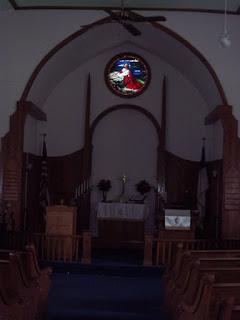This in my Access study Bible that I got in freshman
year as a requirement for Dr. Koosed’s Judaism course. I have 7 Bibles that are
all different translations, but the Access Bible is the only Bible that
was not gifted to me. All my other Bibles are currently located on my bookshelf
with my other books that are used for preaching, classes, and pursuing my own
interest, but my Access Bible cannot be found on the shelf. I do not
shelve this Bible because it would be the equivalent of sheathing my sword when
I am in battle. This Bible can be located in my backpack with all my other
books.
This Access Bible belongs to a senior at Albright
College who is graduating May 22, 2016 at 10 a.m. in the science field!! This Access
Bible also belongs to a licensed preacher of the African Methodist Episcopal
Church. Additionally, I am heading to Wesley Theological Seminary for my
Masters of Divinity degree. In the AME Church there is a separate institute
aside from seminary called the Board of Examiners. The BOE trains
licentiates for ordained ministry. In April of 2017 this Access Bible
will belong to an ordained deacon of the AME Church.
If you were to open my Bibles you would see all different
types of structures, font sizes, and subheadings. However, when you open my Access
Bible you will find in addition to the different types of structures, font
sizes, and subheadings: pages that have been highlighted on, scribbled on,
sweated on, and even cried on. These characteristics are what sets the Access
Bible apart from the 7 other Bibles that I have. One of my spiritual
mentors always quotes Hebrews 4:12 before he calls me a “lazy preacher” and
scolds me “to learn how to use my sword better.”
It was asked of me to explain the reason for the writing in
my Bible. There are a couple of different reasons that codify my answer to that
question. When I was a kid I was always taught not to write in books because
they were not yours and had to be returned to the school. Then I started going
to Bible Study and I noticed the older folks highlighting certain verses that
stood out to them as the pastor spoke. It was not until I was gifted a Bible
from one of my spiritual mentors, the same spiritual mentor that calls me a
“lazy preacher” and scolds me to “learn how to use my sword better,” that I saw
writing in a Bible. His Bible had under-linings of red, black, and blue as
well as high-lightings of yellow, blue, pink, and orange. The under-linings and
the high-lightings I had seen before, but I had never seen writing in a Bible.
“The Bible in the Victorian Home” recorded family records of births, deaths,
marriages, christenings, and baptisms; however, his Bible recorded feelings,
linkages to other texts, thoughts, and illegible marks. These marks left a
trail of consciousness that allowed me to peer into my spiritual mentors mind
and see the text as he did. When I purchased the Access Bible I still
was in possession of my mentor’s Bible so I did not use the Access Bible
as much. However, after I received a call saying he needed his Bible back I
decided it was time to start using my own sword, so I began cataloging my own
thoughts in the fashion of my spiritual mentor.
While cataloging I found out that my Bible became a time
capsule, and as I read back over passages I was transported back to the
feelings I had when I made the note in my Bible. The timeline of notes makes
this Bible special because the notes allow me to recollect why I have the
feelings that I have about issues. This is especially helpful while preaching
because I am able to quickly find points that agree with the sermon in the
margins of my Bible.
There is also the concept of faking the wear and tear of the
highlighted and noted Bible that is in the picture. There are people who carry around
Bibles that are marked up scored and underlined like mine but they have no
clue what the scriptures actually say. The well-used Bible is a sign of a seasoned
saint that is in battle constantly which I guess could be the reason why
intentional aging may have been used.
1.Collen McDannell. Material Christianity: Religion and Popular Culture in America (New Haven: Yale University Press, 1995) 90.











